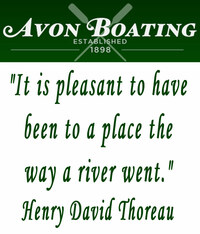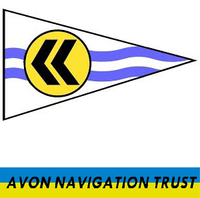Many thanks to the crew at Avon Boating for facilitating this camera's location and to The Severn Rivers Trust for capitally funding its installation. The River Avon, alternatively referred to as the Upper Avon, Warwickshire Avon, or Shakespeare's Avon, spans a length of 85 miles. Its source can be found near the village of Naseby in Northamptonshire. During the initial stretch of its course, from Welford to the Dow Bridge on Watling Street, it serves as the boundary between Northamptonshire and Leicestershire. Along this section, the river has been dammed to create Stanford Reservoir. It then meanders in a predominantly west-southwesterly direction, running parallel to the Cotswold Edge and traversing the Vale of Evesham. Notable towns and villages situated along its course include Welford, Rugby, Wolston (adjacent to Leamington Spa), Warwick, Stratford-upon-Avon, Welford-on-Avon, Bidford-on-Avon, Evesham, and Pershore, before finally merging with the River Severn at Tewkesbury.Situated in Stratford-upon-Avon, England, the Clopton Bridge is a Late Medieval masonry arch bridge featuring 14 pointed arches. It spans the River Avon at the location where the river was historically forded during Saxon times, lending its name to the town. The bridge, which remains in active use, carries the A3400 road across the River Avon and holds the distinction of being listed as a Grade I historical structure.Construction of the bridge took place around 1484 under the patronage of Hugh Clopton, who resided at Clopton House and later served as Lord Mayor of London. It replaced a timber bridge first mentioned in 1235, which had been described by John Leland as "but a poore Bridge of Timber, and no causey [causeway] to come to it," noting its diminutive and precarious nature, especially during high waters.In 1524, two arches of the bridge were reconstructed. Subsequent repairs were carried out in 1588 following a flood and in 1642 after an arch was intentionally destroyed to impede the army of Oliver Cromwell. In 1696, funds were raised to raise the parapets, as they were as low as four inches in certain sections. The bridge underwent expansion on its north side (upstream) in 1811, accompanied by the addition of a ten-sided toll-house tower in 1814. In 1827, a cast-iron footbridge was incorporated on the north side.John Leland provided a vivid depiction of the bridge, referring to it as "a great and sumptuous Bridge upon Avon at the East Ende of the Towne, which hath 14 great Arches of Stone and long Causey made of Stone, low walled on each side, at the West Ende of the Bridge."
Today, the bridge holds the esteemed status of being a Grade I listed building and a Scheduled Ancient Monument, acknowledging its historical significance and architectural merit.







